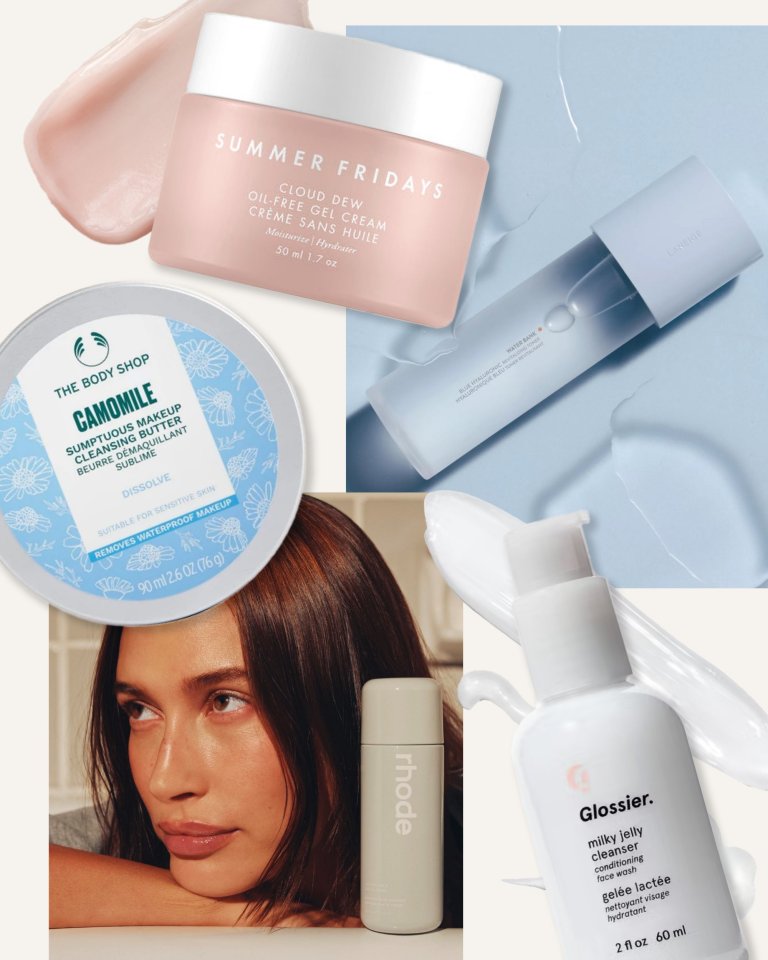If your skin starts to feel tight and uncomfortable in the winter months, then it’s likely that you’ve fallen prey to dehydration. Dehydrated skin is a common skin condition that comes as a result of cold weather, central heating, and a lack of moisture in the air, so the bad news is it can be pretty difficult to avoid December through March. The good news? It’s easy to treat with the right skincare ingredients and simple changes to your routine.
Luckily for me (!), I have dehydrated skin all year round, so I’ve tried almost every hydration-focused skincare product I can get my hands on, and as a result, I’ve curated a routine that’s all about rehydrating my skin to the max. So, if you’re unsure of where to start, which ingredients to look out for, and how to tweak your skincare routine to send dehydration packing, read on to find my recommendations and tips for bringing back plump, rejuvenated, glowing skin.
What is dehydrated skin?
Dehydrated skin can be commonly confused with having a dry skin type, leading people to focus on using the wrong products to try and treat it. Whereas dry skin stems from a lack of oil in the skin, dehydrated skin is the result of losing more water from the skin than is being put in. This can happen for a multitude of reasons: when you have a compromised skin barrier (which leads to TEWL, trans-epidermal water loss), when you don’t drink enough water, if there’s a lack of moisture/humidity in your environment, as well as stress and genetics. It’s a tricky one to avoid.
Because dehydrated skin is a skin condition rather than a skin type, you can have both oily and dehydrated skin or dry and dehydrated skin.
How do I know if I have dehydrated skin?
The reason many people confuse dryness and dehydration is down to the similarities in how your skin is left feeling and looking. Both dehydrated skin and having a dry skin type can leave your face feeling tight, looking dull, and you may notice fine lines becoming more apparent, with makeup turning patchy throughout the day.
Dry skin tends to be more easily irritated and doesn’t absorb products as easily, whereas dehydrated skin will quickly suck up any moisturisers applied. You can create a routine that addresses both of these simultaneously by incorporating products that prioritise hydrating ingredients for dehydration and nourishing, oil-based formulas to replenish your dry skin.
The best skincare routine for dehydrated skin
So you’ve identified you’ve got dehydrated skin, now here’s how you can treat it in your routine, with products my dehydrated skin has tried and loved. Oh, and drinking lots of water will go a long way too.
Cleanser
When it comes to your cleanser, stay well away from formulas that will further strip your skin barrier of its natural oils. This usually constitutes foaming cleansers that contain SLS. You know the ones that leave your skin feeling tight as soon as you’ve used them?
Instead, invest in a sumptuous balm or oil cleanser as your first cleanse, and then a hydrating cleanser for a second cleanser, which can also be used in the morning.
While I used to be a religious morning and evening cleanser, I now prefer to skip cleansing my face in the morning as long as I’ve done a thorough double cleanse the night before. Instead, I’ll rinse my face with water and follow with my usual skincare routine, which benefits my dry skin no end. If you have an oily skin type, you’ll be better to stick with a gentle but clarifying morning cleanse to help rebalance your sebum production.
Shop the edit: best cleansers for dehydrated skin
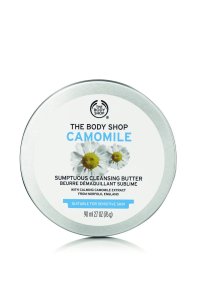

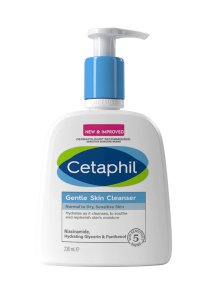
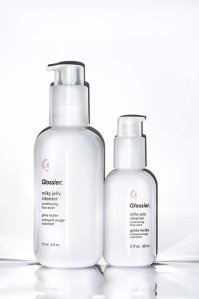
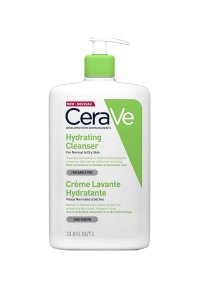
*Eliza may earn commission on sales from these product links
Some of my favourite ‘first cleanse’ cleansers I have on rotation include The Bare Balm, £27, Mantle, which leaves my skin feeling incredibly nourished, the Camomile Makeup Cleansing Butter, £12, The Body Shop, an iconic cleansing balm which removes even waterproof makeup easily and gently, and Naturium’s Purple Ginseng Cleansing Balm, £21, Space NK, which feels incredibly luxurious and softening thanks to a blend of oils and plant-based esters.
When it comes to a hydrating second cleanser to wash off any remaining product, I love Cetaphil’s Gentle Skin Cleanser, £10, Boots, which is formulated with hydrating glycerin and niacinamide. Glossier’s Milky Jelly Cleanser, £10, Glossier, gently cleanses and conditions my skin, and you can’t go wrong with CeraVe’s Hydrating Facial Cleanser, £12.50, Boots, a ceramide-infused gel cleanser which has outlasted many of my relationships.
Face mist
It wasn’t until a couple of years ago I began drenching my skin with a face mist as the first step in my skincare routine (after cleansing). The moisture sandwiching trend circulating social media at the time piqued my interest, promising to increase hydration when layering or ‘sandwiching’ hydrating products in between each skincare step.
After asking a few dermatologists for their opinions on the trend and trying it out for myself, I’ve been spritzing ever since. Applying a toner or serum onto dry skin now feels so odd, I’ll never be without a mist in my skincare routine again.
The aim here is to lock as much water into the skin as possible, so hydrating mists are your best bet. If you can splurge, Omorovicza’s Queen of Hungary Mist, £52, SpaceNK, utilises the brand’s famous thermal waters and smells divine, waking your skin up with a luxurious spritz first thing in the morning, while Dermalogica’s Hyaluronic Ceramide Mist, £49, Look Fantastic, is packed full of hyaluronic acid and ceramides, and immediately leaves your skin feel more supple and elastic.
In terms of affordable options, you can’t go wrong with La Roche-Posay’s Cicaplast B5 Soothing Repair Spray, £15, Boots, which helps to repair the skin’s barrier function and protect broken skin. Avène’s Eau Thermal Water Spray, £10, Cult Beauty, is another great option, formulated with soothing thermal water that’s ideal for calming sensitive skin.
Shop the edit: best face mists for dehydrated skin
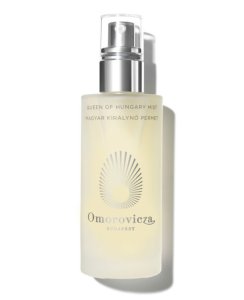
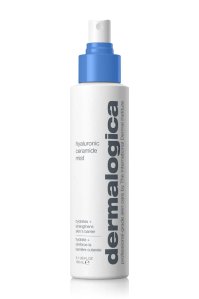
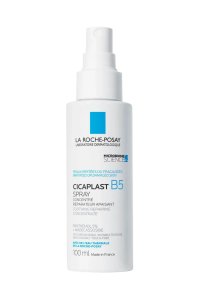
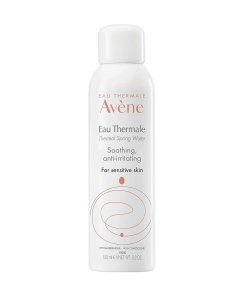
*Eliza may earn commission on sales from these product links
Essence
I was always sceptical about this step, and it took me discovering two products to convert me into an everyday toner girl. The first was CosRx’s Advanced Snail 96 Mucin Power Essence Gel, £14.93, Amazon, which I love so much I wrote a whole piece about it. While it’s a bit gross (yes, it really does contain snail mucin), the reparative and moisturising effect it has on my skin is incredible.
The second essence I fell in love with was Rhode’s Glazing Milk, £30, a lightweight milky essence that my skin drinks up in seconds, leaving it hydrated, plump and dewy, with the added benefit of supporting my skin’s barrier function.
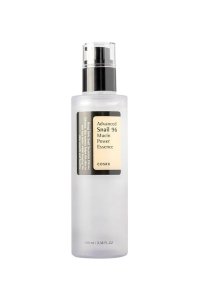
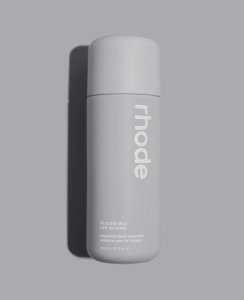
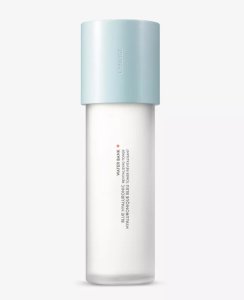
*Eliza may earn commission on sales from these product links
Toners and essences can be used interchangeably, and Laneige’s Water Bank Blue Hyaluronic Revitalising Toner, £23, Selfridges, is another great addition for boosting hydration. With an effective cocktail of soothing and hydrating ingredients including hyaluronic acid and Beta Pro-nol Complex, it penetrates the skin to deliver hydration at a deeper level.
Serum
Swapping in a hydrating serum or treatment to your routine will make one of the biggest differences to your skin, and there are a whole host of effective formulas available that won’t break the bank.
There are a few ingredients you need to have on your radar when shopping for a new serum to tackle dehydration. Hyaluronic acid is definitely my number one and has become a favourite key ingredient for hundreds of skincare products. It’s popular because of its humectant properties, meaning it retains moisture and is capable of holding up to 1000x times its weight in water.
Hyaluronic acid comes in different molecular weights, with low molecular weights having the benefit of being able to penetrate the skin tissue at a deeper level. For optimal hydration, you want to look for a serum with multiple molecular weights which will enable it to deliver hydration to the skin on multiple levels.
A few of my favourites are Farmacy’s Filling Good Hyaluronic Acid Plumping Serum, £45, Cult Beauty, which features three different molecular weights of hyaluronic acid and gives a beautiful plumpness to the skin.
Kiehl’s Ultra Pure High-Potency Serum 1.5% Hyaluronic Acid, £29, Boots, is a concentrated hyaluronic serum that features only 7 ingredients, and has a slightly thicker consistency which I personally prefer.
Shop the edit: best hyaluronic serums for dehydrated skin
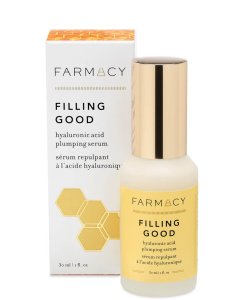
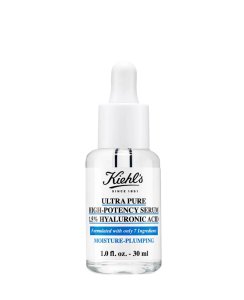

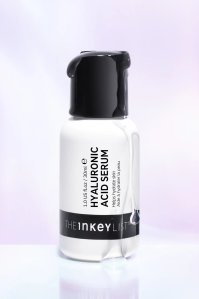
*Eliza may earn commission on sales from these product links
The Inkey List’s Hyaluronic Acid Serum, £7.99, and The Ordinary’s Hyaluronic Acid 2% + B5, £7.90, both Boots, are two high street no-frills formulations that I rate and have used many times. Both contain low, medium and high molecular weights of hyaluronic acid and layer well between the rest of your routine.
Other ingredients that will help to boost hydration in your skin include glycerin, ceramides, squalane and fatty acids.
Moisturiser
A moisturiser is absolutely key for sealing in all the goodness you’ve prepped the skin with. If you have oily skin, a lightweight, water-based moisturiser such as e.l.f’s Holy Hydration! Face Cream, £13, e.l.f, will keep the skin hydrated and feeling soft without clogging pores. While Summer Friday’s Cloud Dew Oil-Free Gel Cream Moisturiser, £45, Space NK, an oil-free gel moisturiser infused with ceramides that helps to keep your skin barrier strong.
If you have a dry skin type as well as dehydration, a thick cream formulated with nourishing oils and ceramides will help replenish moisture and lock in hydration at the same time. Weleda’s Skin Food, £14.95, Look Fantastic, is an absolute must for dry skin in winter- it has an occlusive, rich texture and is the perfect base for glowy makeup.
Shop the edit: best moisturisers for dehydrated skin
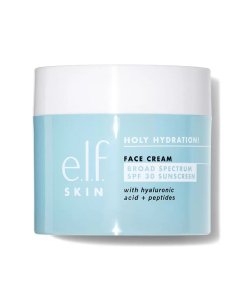


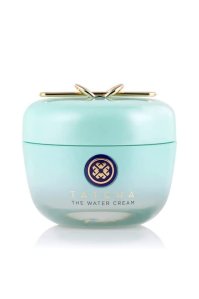
*Eliza may earn commission on sales from these product links
My absolute favourite moisturiser which I call on all year round, and is a fantastic option for both oily and dry skin types, is Tatcha’s Water Cream, £67, Space NK. It has a super lightweight and refreshing consistency (not to mention a beautifully delicate scent), but the hydration, plumpness and dewy finish it gives to the skin is like nothing else I’ve tried and I genuinely can’t get enough of it.
